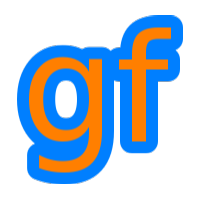21 #ifndef GF_BUFFERED_GEOMETRY_H 22 #define GF_BUFFERED_GEOMETRY_H 30 #ifndef DOXYGEN_SHOULD_SKIP_THIS 95 m_outlineBuffer = &outlineBuffer;
112 m_texture = &texture;
137 return m_texture !=
nullptr;
201 #ifndef DOXYGEN_SHOULD_SKIP_THIS
BufferedGeometry(const VertexBuffer &buffer, const VertexBuffer &outlineBuffer)
Constructor with a buffer and an outline buffer.
BufferedGeometry()
Default constructor.
Base class for all render targets (window, texture, ...)
Definition: RenderTarget.h:66
Define the states used for drawing to a RenderTarget.
Definition: RenderStates.h:82
void setLocalBounds(const RectF &bounds)
Set the local bounds of the geometry.
Definition: BufferedGeometry.h:160
Data in the graphics memory.
Definition: VertexBuffer.h:70
void setTexture(const BareTexture &texture)
Change the source texture of the geometry.
Definition: BufferedGeometry.h:111
bool hasTexture() const
Check if a texture is set.
Definition: BufferedGeometry.h:136
virtual void draw(RenderTarget &target, RenderStates states) override
Draw the object to a render target.
The namespace for gf classes.
Definition: Action.h:34
RectF getLocalBounds() const
Get the local bounding rectangle of the entity.
Definition: BufferedGeometry.h:175
An image that lives in the graphic memory that can be used for drawing.
Definition: Texture.h:67
void setAnchor(Anchor anchor)
Set the anchor origin of the entity.
BufferedGeometry(const VertexBuffer &buffer)
Constructor with a buffer.
A drawable for buffers.
Definition: BufferedGeometry.h:55
void setOutlineBuffer(const VertexBuffer &outlineBuffer)
Set the outline buffer, if any.
Definition: BufferedGeometry.h:94
const BareTexture & getTexture() const
Get the source texture of the geometry.
Definition: BufferedGeometry.h:125
Anchor
An anchor of a box.
Definition: Anchor.h:41
#define GF_API
Definition: Portability.h:35
void setBuffer(const VertexBuffer &buffer)
Set the vertex buffer.
Definition: BufferedGeometry.h:84
void unsetTexture()
Unset the source texture of the geometry.
Definition: BufferedGeometry.h:147


 1.8.13
1.8.13